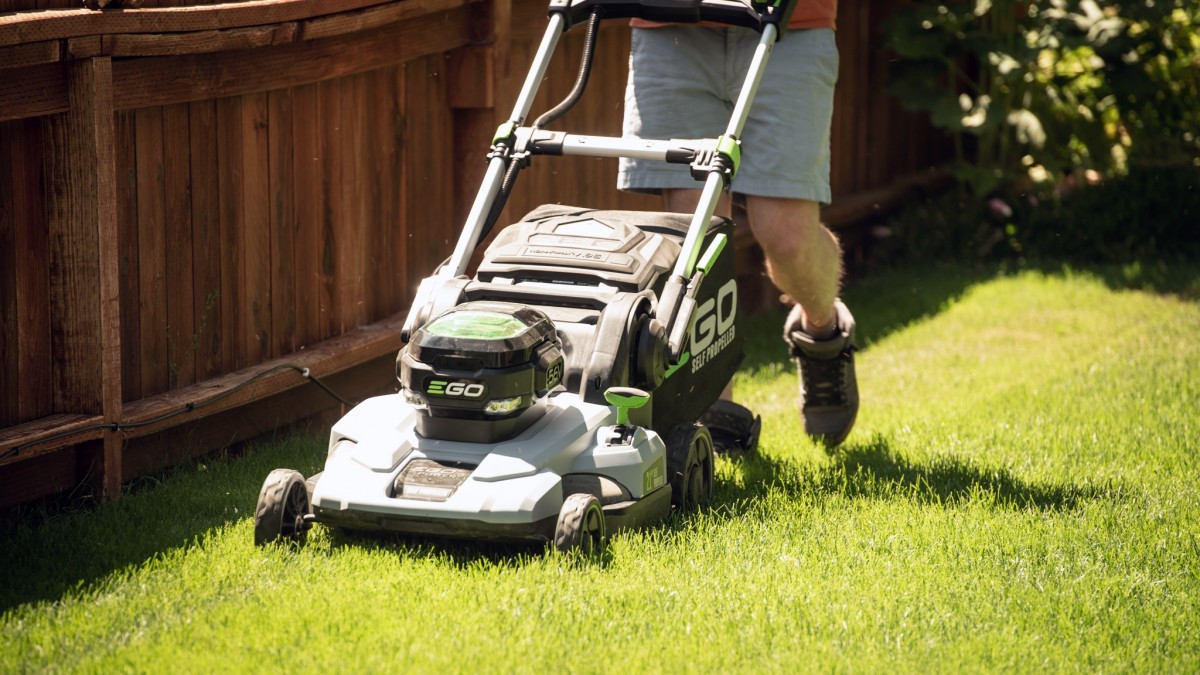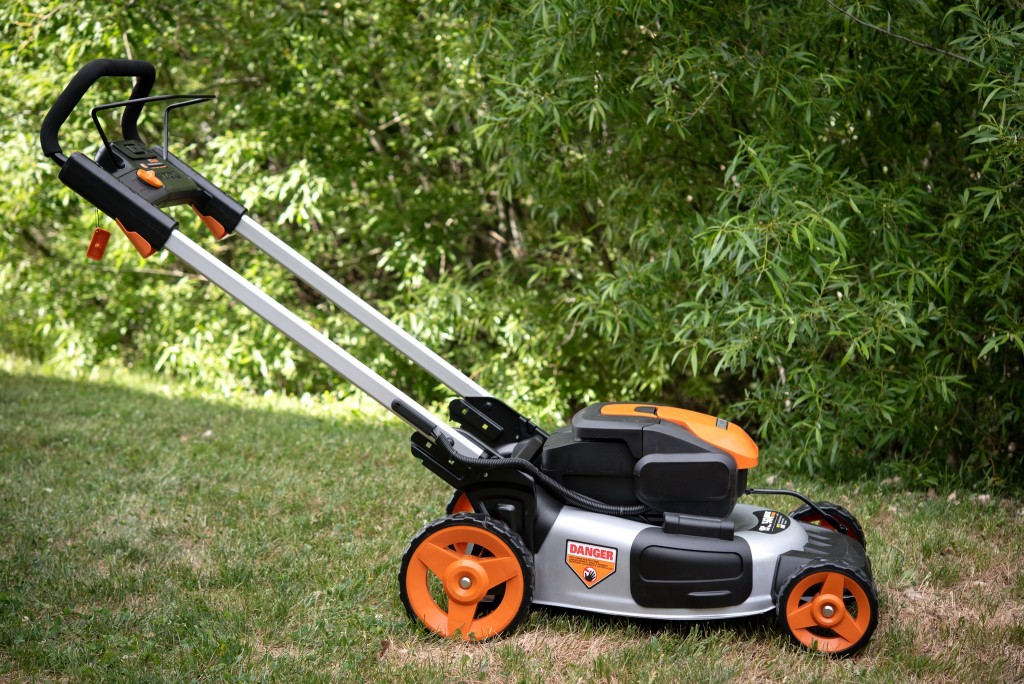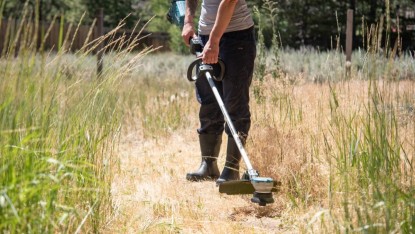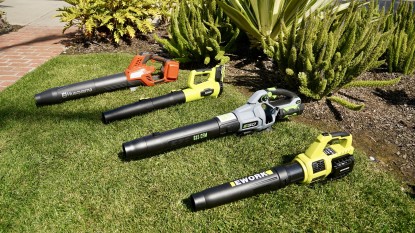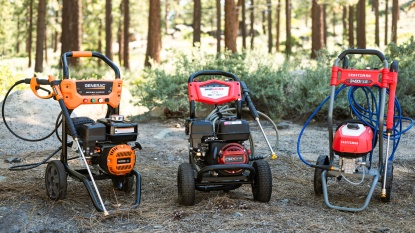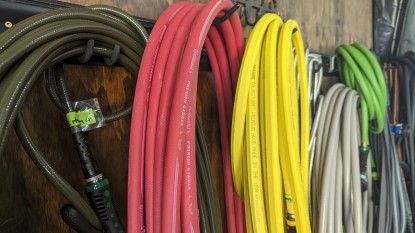The lawn mower market has changed significantly in recent years. Where there was once a plethora of gas-powered machines, there are now electric models that run off the same batteries as string trimmers and leaf blowers. We appreciate the hesitancy many may feel when investing in newer technologies. Moreover, we understand the frustrations in researching and cataloging all the different features available with these types of products. However, you can rest assured that we do the heavy lifting in the research department for you. We thoroughly scrutinize the market and perform hands-on testing on many of the most promising models. The information that we derive from this work is organized here so that you can easily bring yourself up to speed on cordless mowers. The following is a comprehensive guide to what you do and — perhaps more importantly — what you do not need in a new mower based on specific lawn types and user demands. We'll begin with a general background on lawn mowers for context and move on to the specifics of contemporary mowing machines.
Gas Powered vs. Battery Powered Lawn Mowers
Those readers that grew up mowing their parents and neighbors lawns for extra cash will be familiar with the frustrations of the traditional internal combustion lawn mowers. These machines were often difficult to get started. Gas levels and oil mixtures had to be checked, the induction system had to be primed, the choke set and then the starter cord was yanked repeatedly in a shoulder-wrenching, sweat-inducing procedure. This process was taxing, especially if the patriarch was standing there reminding you not to flood the engine — something this author often did despite the warnings. When the motor finally turned over, it roared with each revolution of the engine and belched CO2. Well, we're happy to report that mowing the lawn no longer has to be this harrowing.
Cordless or electric lawn mowers alleviate many of these tribulations, thus making cutting the grass enjoyable in the moment as opposed to rewarding upon completion. The modern version of machines run off rechargeable lithium-ion batteries, their engines require no fluid checking, no priming, and best of all, they start with the push of a button. Moreover, the lack of a controlled series of explosions powering the motor means that these new mowers are significantly less noisy. With the understanding that the benefits described above are universal to all cordless mowers models, let's move on to the considerations that are nonstandard among these products. Knowledge of these nonstandard features will aid in matching the right mower to the right lawn.
Batteries First
One of the coolest things about cordless mowers is that they run on battery cells that are often compatible with other power tools. So, if you already have a cordless hedge trimmer or leaf blower, then it is a good idea to check and see if the manufacturer of that tool also makes a lawn mower. If the company does, then you should see if there is a product that matches your needs. Making a match between what you own and what you want to buy will save you money as well as space in your garage as you won't have multiple power sources for your electric tools.
When looking to match one electric tool's battery to another, start with the manufacturer as the terminals and connection will likely be proprietary. If the manufacturer matches, then look at the voltage. Electric motors that do more work require a higher voltage. For example, many cordless drills run on 18-volt batteries. Conversely, very few cordless mowers run off 18-volt batteries — most are 40-volts and greater.
If you can't line up your existing tools with the ones you want to buy, or you don't have any cordless tools to begin with, it's still prudent to check and see if the manufacturers of the mowers you are interested in offer other tools that you'd like to add to your arsenal in the future. These other tools could be a string trimmer, drill, or chainsaw, to name just a few. Often, these products are sold both with and without batteries. Those tools that come without batteries are usually significantly less expensive. Keeping battery compatibility in mind, let's move on to the more fundamental issue of assessing the demands that your particular lawn will place on a mower.
Turf, Topography and Climate
Mowing the grass isn't as straightforward as the uninitiated might imagine. For instance, there are more types of grass being cultivated in North America today than there is space here to discuss. Each variety has a preferred climate, soil, watering schedule, and most relevant to our purposes here, cutting height. While we will not go into the details of cutting heights, we recommend that you do some research on your lawn before giving your grass a trim. Once the ideal cutting height for your lawn is established, you'll want to be sure that the mowers you are looking at cover the cutting range that your lawn requires.
Some grass varieties will sustain trims as short as a half an inch, while others can be kept shaggy at four or more inches. Often the ideal grass length will be a range, thus offering the landscaper trimming options. However, these recommended ranges will often change with the seasons.
Once the range of cutting heights has been established, the next factors we want to consider are the size of the lawn to be mowed, the topography of the lawn, and the weather. All of these factors play into the selection of the mower you ultimately purchase. Let's look at lawn size first.
There are a couple of features that, given a prodigious lawn, one will want to pay close attention to when selecting a mower. Namely, these are the width of the cutting deck and whether or not the mower is self-propelled. If the cutting deck is wide you will have to make fewer passes — thus spending less time — than when running a narrow cutting deck model on the same parcel of turf.
Some overlap is required from one row to the next in order to avoid leaving a strip of uncut grass. As such, we measure the cutting deck width between the front two wheels to account for the overlap required. Typically, this comes out to be about 3-4" narrower than the advertised cutting deck width.
When using our method for measuring cutting deck widths, the strip of grass cut on a single pass will typically be between 14-20" depending on the model selected. While the dimensional difference between these two cutting decks may not seem to be that vast when they are sitting side by side, take a look at how the math works out on a moderate size lawn. With a lawn measuring 100' on a side, you will be able to mow it in ~60 passes with a 20' cutting deck. If the cutting deck is 14" wide, that same job will require ~26 additional passes which will result in about a half-mile more waking!
We observe similar differences in workload to those discussed above when considering the topography of the land on which a lawn is growing. Admittedly, these differences are a bit harder to quantify. Suffice it to say that if you are going to be mowing a large parcel that is on an incline, you will want to consider a machine that is self-propelled. Like the wider cutting deck, this feature will increase the cost of the mower, but if the axiom that time is money holds true, then you're saving money by saving time with a machine that will carry its own weight. With factors that increase demands on the mower and its operaterator in mind, let's move how weather affects lawn care.
Anyone who has mowed a lawn when the grass is wet knows that it is problematic. Wet grass is heavier. Moreover, the moisture on the blades of grass and the interior of the cutting deck increases the likelihood that the clippings will cluster and clog the machine when mulching. When bagging, the machine itself will increase in weight with all the extra water on board, thus making the task all the more difficult. The takeaway here is that if you live in a place that is more likely to see rain during the growing season, then you will want to consider a self-propelled model that has a more powerful motor and a battery with a greater amp-hour rating.
While wet weather is certainly a concern, regular sunshine can pose problems as well. Assuming that all the other needs of the grass are satisfied, lots of sun will produce rapid growth. An accelerated growth rate will create a situation where frequent mowing is required. Unfortunately, if one is using a lower-end mower, frequent use will likely amplify the vexations caused by a budget model's shortcomings. Often these frustrations are centered around the lack of self-propulsion.
Mechanized vs. Manual Propulsion
We have briefly touched on the advantages of having a self-propelled mower in the preceding sections of this article. However, a more direct comparison between mechanized and manual propulsion is warranted. Simply put, a self-propelled mower is one that is made mobile by the motor turning the wheels; thus making it vehicle-like. Conversely, a manual mower requires the user to push it to make it move.
In large part, the decision between the two propulsion options is one of ease and economy. In most cases, one will save money on a self-propelled model. However, taking into account the size and topography of your yard, you'll have to work harder to get the lawn mowed. This work will be increased if you choose to bag the clippings as you'll be pushing around all that extra weight. On the other hand, if your yard is fairly small and flat, then these considerations don't carry so much weight, so to speak.
Conclusion
The aim of this article is to simplify the battery lawn mower marker for you. While there are certainly a lot of options out there to choose from, the information above should allow you to cut through the marketing hype and select the right product for your needs. For more information on the best cordless mowers, check out our thorough battery lawn mower review. Without a doubt, we've tested a mower that will meet your needs and budget.

